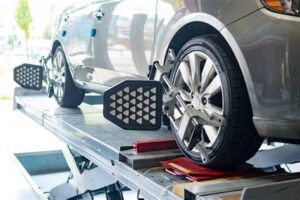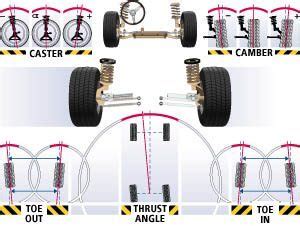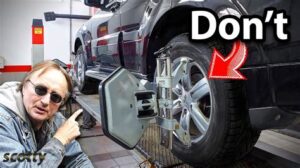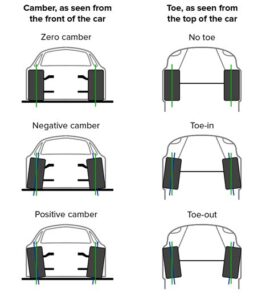Ensuring your vehicle drives smoothly is essential for safety and performance, and one crucial factor in this is proper car alignment. Many drivers, however, might wonder, how long does it take for a car alignment? Understanding the intricacies of car alignment can help you make informed decisions about your vehicle’s maintenance. This article will delve into what car alignment entails, the typical duration for the service, and the factors that can influence the time required. Additionally, we’ll highlight key signs indicating that your car may need an alignment and outline the numerous benefits of timely service. Whether you’re a seasoned car owner or a new driver, this guide aims to provide clarity on this vital aspect of vehicle upkeep. Let’s get started!
Understanding Car Alignment: What Does It Involve?
Car alignment, often termed wheel alignment, is a crucial maintenance procedure designed to ensure that your vehicle’s wheels are properly adjusted relative to each other and to the road. The primary aim of car alignment is to improve vehicle handling, enhance tire longevity, and promote overall safety while driving. Understanding how long car alignment takes, along with what the service entails, can help in maintaining your vehicle more effectively.
During a typical car alignment service, several key adjustments are made, including:
| Term | Description |
|---|---|
| Camber | The angle of the wheel relative to the vertical axis. An improper camber can cause uneven tire wear. |
| Toe | This refers to the angle at which the tires point in relation to the centerline of the vehicle, affecting handling and tire wear. |
| caster | The angle of the steering axis when viewed from the side, influencing stability during straight-line driving and cornering. |
Proper alignment involves adjusting these angles to the manufacturer’s specifications. This ensures that all four wheels are parallel and that they are perpendicular to the road surface, which ultimately contributes to smoother rides, increased fuel efficiency, and enhanced tire performance.
Regular checks and adjustments become increasingly important as issues such as potholes, curb impacts, or worn suspension components can easily throw the alignment off. Understanding how alignment works provides valuable insights into the importance of maintaining it and can also help when considering how long the service will take during your routine vehicle maintenance visits.
How Long Does It Take for a Car Alignment Service?
When considering a car alignment, it’s common to wonder how long the service will take. Generally, the duration for a typical car alignment service ranges from 30 minutes to 1 hour. However, this can vary based on several factors, including the technician’s experience, the type of alignment required, and the condition of your vehicle.
For a standard alignment, the technician will first evaluate the vehicle’s suspension system and tire health. After this inspection, they can proceed with the alignment adjustments that align the vehicle’s wheels to the manufacturer’s specifications.
In cases where additional repairs or adjustments are necessary, such as replacing worn suspension parts or realigning after a collision, the how long it takes may extend significantly. Appointments ahead of time can also affect overall wait times, especially in busy service centers.
Considering the importance of proper wheel alignment for vehicle performance and safety, investing this time can go a long way towards enhancing ride quality and prolonging tire life.
Factors That Affect How Long Car Alignment Takes
When considering how long a car alignment service will take, it’s essential to recognize the various factors that can significantly influence the duration of the process. Below are the primary aspects to consider:
| Factor | Description |
|---|---|
| Type of Vehicle | Different vehicles have varying designs and specifications, affecting alignment complexity. |
| Alignment Type | Some alignments (e.g., two-wheel vs. four-wheel) may take longer due to the extra adjustments required. |
| Condition of Suspension | Any wear or damage in the vehicle’s suspension system could extend the time needed for alignment. |
| Alignment Equipment | Modern, advanced alignment machines typically provide quicker and more accurate results. |
| Technician Experience | Experienced technicians can usually perform alignments more efficiently than those less familiar with the process. |
The duration of a car alignment service is not solely determined by the service itself but is also influenced by factors such as the type of vehicle, the specific alignment type, and the condition of the suspension system. Understanding these elements can help car owners set realistic expectations regarding how long the service will take.
Signs You Need a Car Alignment and Time Required
Recognizing the signs that your car needs alignment is crucial for maintaining your vehicle’s performance and ensuring safety on the road. Here are some key indicators that suggest it might be time for a car alignment:
- Uneven Tire Wear: One of the most noticeable signs that your car requires alignment is uneven tire wear. If you notice that one side of your tires is more worn than the other, this is a clear indication that your alignment is off.
- Pulling to One Side: If your vehicle tends to drift to one side while driving on a straight road, it’s likely a result of misaligned wheels.
- Steering Wheel Off Center: When your steering wheel is not centered despite driving straight, it can indicate a need for alignment. The wheel should be aligned parallel to the vehicle’s body.
- Vibrations in the Steering Wheel: Excessive vibrations while driving can be a sign of alignment issues. While this can also indicate balancing problems, it’s essential to have both checked.
- Squealing Tires: If you hear any unusual sounds, like squealing tires, it could hint at alignment problems, especially during turns.
The time required for a car alignment typically ranges from 30 minutes to 1 hour. However, this may be influenced by several factors, such as the type of alignment service you opt for (two-wheel or four-wheel alignment) and the current condition of your vehicle. Additionally, if any adjustments or repairs are necessary before the alignment can be performed, this may increase the total time required. Regularly checking for the signs mentioned above and addressing alignment issues promptly will not only save you time in the long run but also enhance your vehicle’s overall performance.
Benefits of Timely Car Alignment: Time Savings Explained
Keeping your vehicle’s wheels properly aligned not only improves driving safety but can also save you significant time in the long run. Here’s how timely car alignment positively affects your time management:
- Reduces Tire Wear: Proper alignment ensures that tires wear evenly. When tires last longer, you spend less time and effort on replacements, giving you more time for other important tasks.
- Enhances Fuel Efficiency: When your wheels are aligned, it helps maintain optimal fuel consumption. This means fewer trips to the gas station and therefore, more time for you.
- Minimizes Unexpected Breakdowns: Regular alignments can prevent additional wear on suspension and steering components, reducing the chances of unexpected failures that could lead to significant downtime.
- Improves Driving Comfort: A well-aligned car provides a smoother ride, minimizing the need for frequent adjustments or distractions while driving, ultimately saving you time on the road.
While the how long it takes for an alignment service may vary, the benefits of timely alignments can lead to considerable time savings. Prioritizing regular alignments is a proactive approach that enhances your vehicle’s performance and longevity, allowing you to avoid time-consuming car issues down the line.
Frequently Asked Questions
What is a car alignment?
Car alignment refers to adjusting the angles of the wheels to meet the manufacturer’s specifications, ensuring that they are perpendicular to the ground and parallel to each other.
Why is alignment important for my car?
Proper alignment improves vehicle handling, extends tire life, enhances fuel efficiency, and ensures safer driving.
How long does a car alignment typically take?
A car alignment usually takes about 30 minutes to an hour, depending on the vehicle and the condition of the suspension components.
What factors can affect the time it takes for a car alignment?
Factors that can affect alignment time include the type of vehicle, the condition of suspension parts, any required repairs, and the level of expertise of the technician.
How often should I get my car aligned?
It is generally recommended to have your car aligned every 6,000 miles, or at least once a year, but you should check your owner’s manual for specific recommendations.
Can I drive my car if it needs an alignment?
While it is technically possible to drive a car that needs alignment, it is not advisable due to potential safety risks, increased tire wear, and poor handling.
What signs indicate that my car may need an alignment?
Signs that your car may need an alignment include uneven tire wear, the vehicle pulling to one side, a crooked steering wheel, or a jittery ride.





